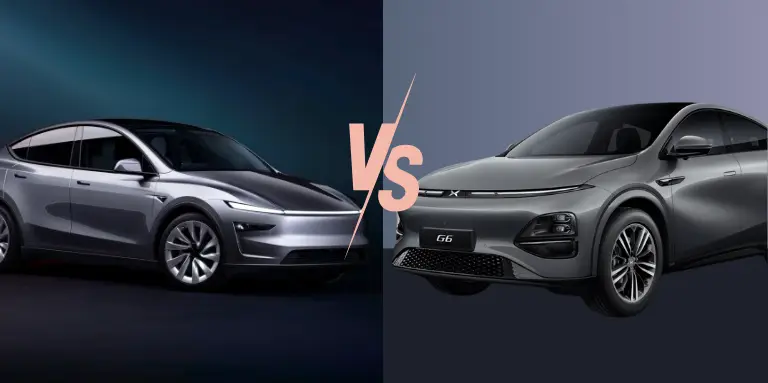Trump unleashes the storm: how will new car taxes shake up the global market?
Donald Trump has set off a storm in the global automotive industry by imposing customs duties of 25 % on vehicles imported into the United Statesand on spare parts from 3 May 2025. This decision, announced a week ahead of schedule, is intended to protect the US car industry and encourage the relocation of production. However, it will disrupt global supply chains, which have already been weakened by recent crises such as Covid-19, inflation and the shortage of semi-conductors.
Foreign manufacturers such as Volkswagen, Toyota and Mercedes-Benz are among the hardest hit, while US consumers could face a significant rise in car prices. This strategic measure, although designed to strengthen the national economy, is sending shockwaves through the global economy and trade, directly affecting European and Asian exports as well as international trade relations.
Details of recent taxes imposed by the Trump administration: everything you need to know
The Trump administration's implementation of the new tariffs took place in several stages, with significant increases designed to protect US industry and rebalance trade. Here are the details:
Since 2 April 2025, vehicles imported into the United States have been subject to a surtax of 25 %, compared with just 2.5 % previously. This measure marks a turning point in US trade policy and is designed to encourage the relocation of automotive production to the United States. Essential spare parts, such as engines, transmissions and electrical components, will also be taxed at 25 % from 3 May 2025, which could disrupt global supply chains.
In addition, a general tax of 10 % on a wide range of imported products was introduced on 5 April 2025. This tax applies to the majority of countries exporting to the United States, but certain strategic sectors such as hydrocarbons and electronic components are exempt. However, specific surcharges have been calculated according to the trade imbalance with each country, particularly targeting those with a high trade surplus with the US.
Focus on surcharges by country :
- China The surtax on Chinese products has been raised to 125 %, compared with 104 % previously. This increase is aimed directly at China's massive trade surplus with the United States and is a lever to encourage Beijing to review its trade practices, which are considered unfair.
- Vietnam Vietnam: Vietnamese exports are now subject to a surtax of 46 %, due to Vietnam's rise as a manufacturing alternative to China.
- Japan Japanese products saw a moderate rise, with a surtax of 24 %, reflecting a significant trade surplus but less marked than that of other Asian countries.
- European Union European car exports, particularly from Germany, are now taxed at a rate of 20 %, which could have a major impact on brands such as BMW, Mercedes-Benz and Volkswagen.
The massive surtaxes, particularly those imposed on China (125 %) and the European Union (20 %), have drawn harsh criticism from the United States' trading partners. Several countries are considering retaliating with their own tariff measures or taking the matter to the World Trade Organisation (WTO). These tensions could exacerbate the risk of a protracted trade war and curb global economic growth.
Comparison table with previous taxes
| Type of product | Rates before April 2025 | Rates after April 2025 |
|---|---|---|
| Imported vehicles | 2,5 % | 25 % |
| Spare parts | Varies according to product | Up to 25 % |
| Chinese products | 34 % | 104 %, then 125 % |
| European exports | Average of 4 % | 20 % |
| British products | Average of 3 % | 10 % |
Products concerned: finished vehicles, spare parts and components
The new taxes imposed by the Trump administration target three main categories of products:
Finished vehicles
Since 3 April 2025, cars imported into the United States have been subject to a surcharge of 25 %, in addition to existing customs duties. This applies to saloons, SUVs, crossovers, minivans and light trucks.
Prices of imported vehicles could rise considerably:
- SUVs could see increases of up to $10,000.
- Electric vehicles, which depend on imported components, could see price rises of up to $15,000.
- European luxury models, such as those from Mercedes-Benz or PorscheThese could be increased by as much as $20,000.
Spare parts
From 3 May 2025, essential spare parts (engines, transmissions, electrical components) will also be subject to a tax of 25 %.
These taxes have a direct impact on production costs and repairs:
- Imported engines could see their prices rise by up to $5,000 per unit.
- Automatic transmissions could see an increase of up to $3,000 per part.
- Essential electronic and electrical systems could lead to cost increases of up to several thousand dollars per vehicle.
Components
Key automotive components used in the manufacture and assembly of vehicles are also subject to the 25 % surcharge. This includes powertrain parts and electronic systems.
Certain exemptions are provided for products manufactured in Canada or Mexico that comply with the USMCA, but their application remains complex and depends on a mechanism to distinguish US value added from other imported elements.
These measures are disrupting the global automotive industry by increasing costs for manufacturers and consumers while disrupting international supply chains.
Why has Donald Trump decided to impose these tariffs?

Donald Trump has justified the new tariffs as a response to what he sees as unfair trading practices by many countries, including China and some traditional US allies. In his view, these countries are "stealing jobs and wealth" from Americans by taking advantage of unbalanced trade agreements and imposing high tariffs on American products themselves.
These measures are also aimed at relocating industrial production, particularly automotive production, to American soil, in order to strengthen the national economy and reduce dependence on imports. By describing this initiative as "reciprocal tariffs", Trump hopes to restore a trade balance that has been considered unfair for decades.
"Made in America or nothing? How do these new taxes affect carmakers?
The new 25 % taxes on imported vehicles and their components are having a direct impact on carmakers, both American and foreign. While the aim is to promote "Made in America", this policy is creating challenges for all players in the sector. American brands such as GM, Ford and Stellantiswhich import a significant proportion of their vehicles and parts from Canada, Mexico and South Korea, are paradoxically more exposed than their foreign competitors.
In fact, around 13 % of the combined worldwide sales of American carmakers come from imports, compared with just 9 % for the United States. Toyota, Honda and Nissan. These taxes increase their production costs and could lead to higher prices for American consumers, while forcing companies to review their production strategies.
Why is the Trump administration targeting the automotive sector?
The automotive sector is at the heart of the US economy and represents a strategic lever for Donald Trump in his quest to relocate industry. By targeting this sector, the administration is seeking to maximise the economic and symbolic impact of its protectionist measures.
Imported cars account for almost 50 % of US sales, making them a major target for reducing dependence on foreign products. What's more, the car industry is an emblematic sector where relocation can create thousands of direct and indirect jobs. By also hitting foreign parts, Trump aims to disrupt global supply chains to encourage manufacturers to produce more on American soil.
Electric vehicles: the green revolution held back by customs barriers
Tesla and its Chinese rivals: an advantage or a handicap?

Tesla enjoys a significant competitive advantage on the American market thanks to its local production, which enables it to avoid the high taxes imposed on Chinese vehicles. Brands such as BYD or Nio are hit by customs duties of up to 125 %, which limits their ability to penetrate the US market. However, Tesla is not entirely immune: around 20 % of its components come from Mexico and Canada, subject to a tax of 25 % from 3 May 2025.
In Europe, Tesla is also facing increased competition from local and Asian brands, despite a reduced tax of 7.8 % on its models imported from China. These tariff barriers increase production costs and could lead to higher prices for its consumers, affecting its global competitiveness.
Trump rejects Europe's offer of zero tariffs
How are European manufacturers planning to adapt?
Donald Trump has recently rejected the European Union's proposal on mutual exemption from customs duties on industrial products, including vehicles. This decision, accompanied by the iTaxes of 20 % on European imports introduced on 9 April 2025is putting European manufacturers in a tricky position. Giants such as BMW, Mercedes-Benz and Volkswagenwhich export nearly 640,000 vehicles to the United States every yearThese companies are now faced with a significant increase in costs.
To adapt, several strategies are emerging among manufacturers:
- Partial relocation: Some companies are considering increasing their production on American soil to get round these taxes.
- Strategic partnerships: Others are exploring alliances with Asian players, particularly in China, to diversify their markets and offset losses.
- Reduced margins or higher prices: Companies could absorb some of the costs or pass on these taxes to American consumers, which could affect the competitiveness of European vehicles.
- Political pressure: ACEA (Association des Constructeurs Européens d'Automobiles) is calling on the European Commission to intensify negotiations with Washington while at the same time reducing local regulations to support the industry.
These adjustments show that European carmakers need to rethink their international strategies in the face of this trade war, which is shaking up the global car market.
Comparative table of rates applied to China vs. other countries
| Country/area | Rates before April 2025 | Rates after April 2025 |
|---|---|---|
| China | 34 % | 104 %, then 125 % |
| European Union | Average of 4 % | 20 % |
| Vietnam | Average of 10 % | 46 % |
| Japan | Average of 8 % | 24 % |
| United Kingdom | Average of 3 % | 10 % |
| New Zealand | Average of 5 % | 15 % |
Conclusion: Trump's tariffs: long-term consequences for the global economy?
The massive tariffs imposed by Donald Trump represent a historic turning point in world trade, with potentially lasting consequences. In the short term, these measures have already led to high volatility on financial markets, a fall in stock market indices and higher prices for US consumers. In the long term, they are likely to lead to further fragmentation of global supply chains, forcing targeted countries to diversify their exports and seek new trading partners.
For the US economy, these taxes could generate persistent inflation and reduce household purchasing powerThis is likely to have a negative impact on the economy, while at the same time curbing consumption. According to Jamie Dimon, Chairman of JP Morgan, they could also lead to a fall in US GDP and harm the competitiveness of local businesses. On a global scale, these protectionist measures could slow international trade and aggravate geopolitical tensions, increasing the risk of stagflation in developed economies and stagnation in emerging countries.
In short, although these tariffs are intended to reindustrialise the United States and reduce its trade deficit, their negative impact on global growth and economic stability could outweigh their hoped-for benefits.
Our experts will advise you according to your needs. Beev offers Tesla 100% electric vehicles at the best prices, as well as recharging solutions.
































